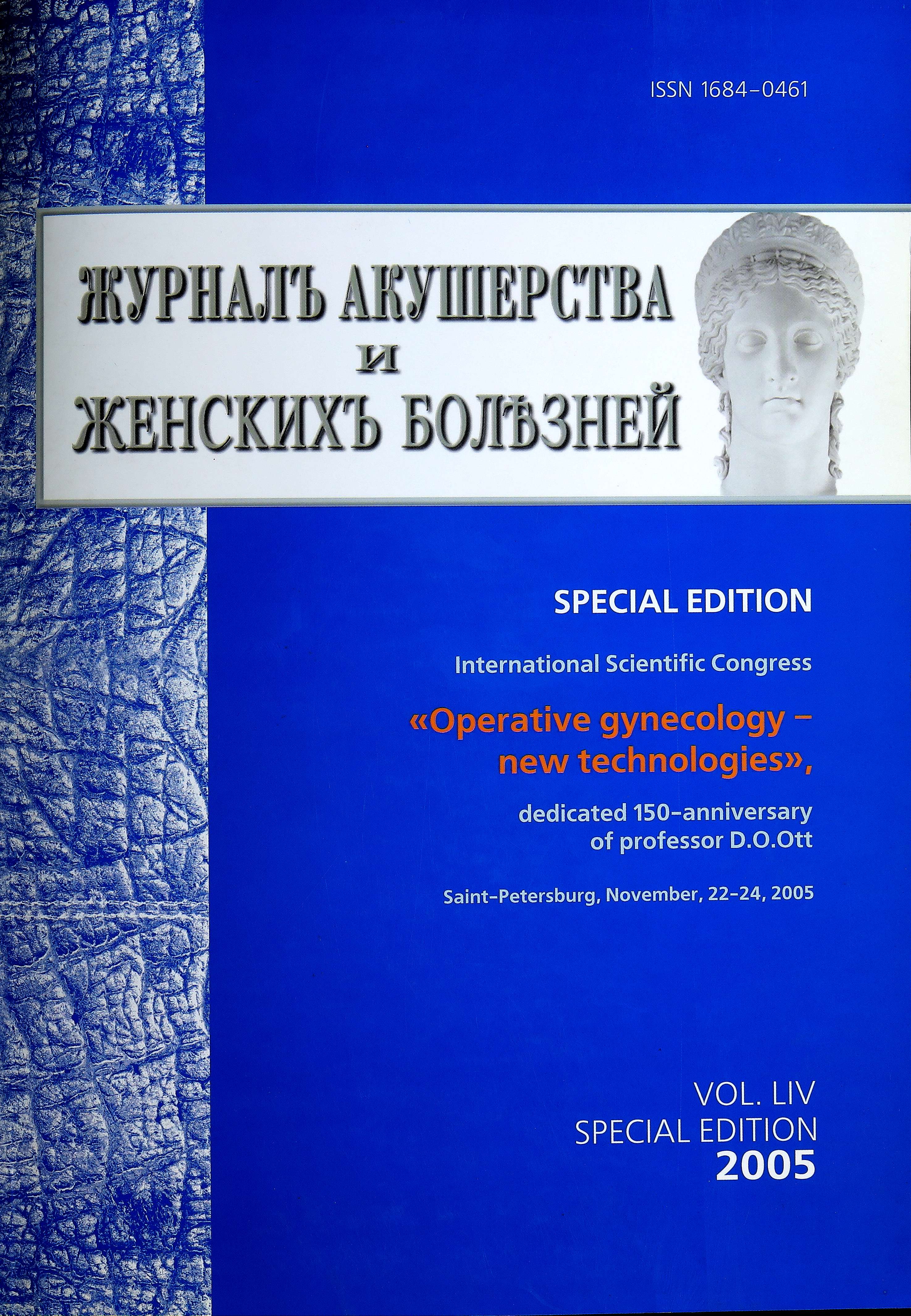Biomechanics and biocompatibility of synthetic suburethral slings
- 作者: Petrov S.В.1,2, Kurenkov А.V.1,2, Jukovsky V.А.1,2, Shkarupa D.D.1,2
-
隶属关系:
- Military Medical Academy
- Limited Liability Company "Lintex"
- 期: 卷 54, 编号 5S (2005)
- 页面: 71-72
- 栏目: Reviews
- ##submission.dateSubmitted##: 15.11.2005
- ##submission.dateAccepted##: 10.11.2021
- ##submission.datePublished##: 15.11.2005
- URL: https://journals.eco-vector.com/jowd/article/view/87483
- DOI: https://doi.org/10.17816/JOWD87483
- ID: 87483
如何引用文章
详细
Aim of study: The aim of our work was to find the correlation between biomechanical properties of synthetic suburethral slings and tissue reaction after implantation of them.
全文:
Aim of study: The aim of our work was to find the correlation between biomechanical properties of synthetic suburethral slings and tissue reaction after implantation of them.
Material and methods. For our research we took five kinds of polypropylene synthetic slings with different structure - TVT (Gynecare), Obtape (Mentor) and three types of synthetic implants, which were created in scientific department of Lintex Ltd (specimen №1, №2 and №3). All implants could be divided into two groups: woven (TVT, specimen №1, №2 and №3) and non-woven (Obtape). Detailed structural and mechanical analysis of implants was undertaken to get information of their thickness, surface density, bulk
porosity, breaking load, maximum deformation, elasticity, middle square of cells, diameter of filaments, middle quantity of filaments in cell walls. Tissue reaction after implantation of selected materials was evaluated in rat model. Specimens were implanted into abdominal wall between skin and muscles. The explants were evaluated for: intensity of inflammation, the nature of inflammation, the development of granulations, intensity of fibrosis, vascularisation, minimal and maximal width of scarring zone around the implant.
Results. The evaluation of structure of implants allowed us to divide them into three groups: with relatively small cells and thin walls of cells (specimen №1), with intermediate characteristics (TVT) and with bigger cells and thick walls (specimens №2 and №3). TVT had the biggest material capacity (94 g/m2) and highest breaking load (80 N), but as well it had extremely instable structure during tension (peak load deformation about 178%). Specimen № 1 had the smallest material capacity (56 g/m2), it had a little bit lower breaking load (57 N), but its structure was very stable during tension (peak load deformation not more then 30%). Specimen №2, №3 and Obtape had intermediate characteristics. Pathologic research showed similar inflammatory response when using of all selected polypropylene implants. However, when using Obtape, in three cases (9%) we observed abscesses in the site of implantation. Considerable difference was in width of scarring zone and intensiveness of fibrosis surrounding the implant. Thin, delicate and equal width of scarring zone was when using Obtape and specimen №1. Thick and solid scarring zone was in cases of specimen №2 and №3. In case of TVT there were intermediate characteristics.
Conclusion. Our research demonstrated that structural and mechanical properties of synthetic implants have obvious influence on tissue reaction after implantation of them.
作者简介
S. Petrov
Military Medical Academy; Limited Liability Company "Lintex"
编辑信件的主要联系方式.
Email: info@eco-vector.com
俄罗斯联邦, Saint Petersburg; Saint Petersburg
А. Kurenkov
Military Medical Academy; Limited Liability Company "Lintex"
Email: info@eco-vector.com
俄罗斯联邦, Saint Petersburg; Saint Petersburg
V. Jukovsky
Military Medical Academy; Limited Liability Company "Lintex"
Email: info@eco-vector.com
俄罗斯联邦, Saint Petersburg; Saint Petersburg
D. Shkarupa
Military Medical Academy; Limited Liability Company "Lintex"
Email: info@eco-vector.com
俄罗斯联邦, Saint Petersburg; Saint Petersburg
参考
补充文件





